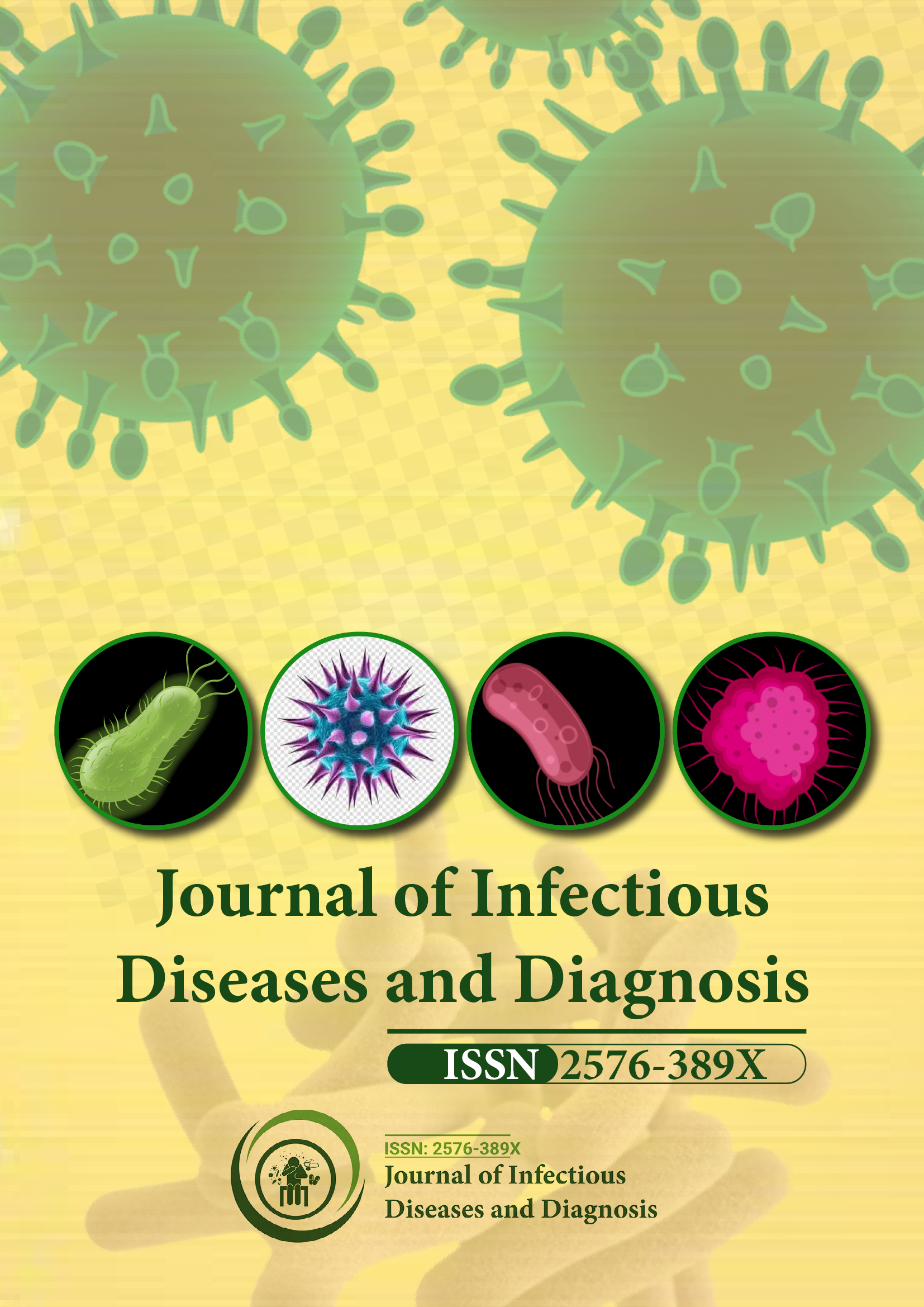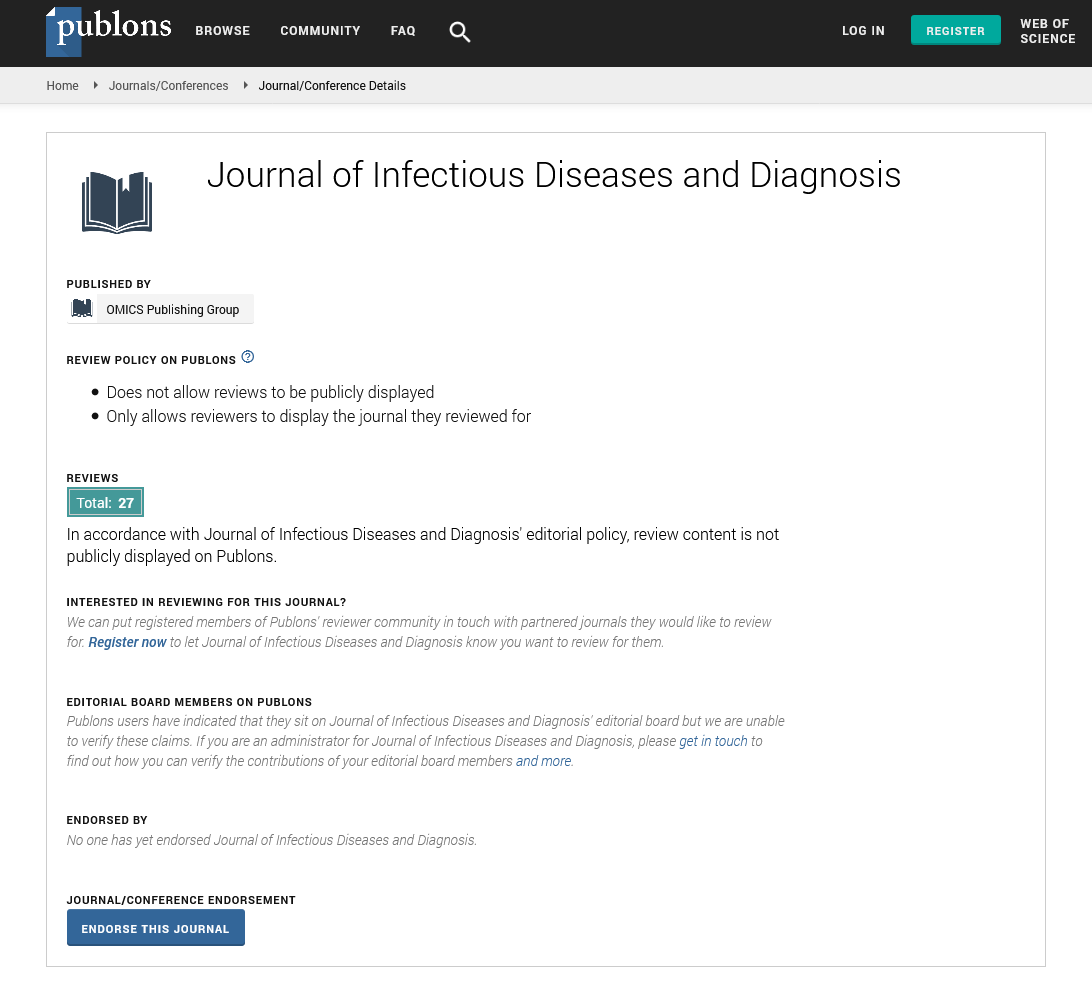Indexed In
- RefSeek
- Hamdard University
- EBSCO A-Z
- Publons
- Euro Pub
- Google Scholar
Useful Links
Share This Page
Journal Flyer

Open Access Journals
- Agri and Aquaculture
- Biochemistry
- Bioinformatics & Systems Biology
- Business & Management
- Chemistry
- Clinical Sciences
- Engineering
- Food & Nutrition
- General Science
- Genetics & Molecular Biology
- Immunology & Microbiology
- Medical Sciences
- Neuroscience & Psychology
- Nursing & Health Care
- Pharmaceutical Sciences
Commentary - (2023) Volume 8, Issue 4
Infection Incidence Linked to Carbapenem-Resistant Acinetobacter baumannii Strains
Reuxi Vaem*Received: 03-Jul-2023, Manuscript No. JIDD-23-22538; Editor assigned: 05-Jul-2023, Pre QC No. JIDD-23-22538 (PQ); Reviewed: 20-Jul-2023, QC No. JIDD-23-22538; Revised: 27-Jul-2023, Manuscript No. JIDD-23-22538 (R); Published: 03-Aug-2023, DOI: 10.35248/2576-389X.23.08.224
About the Study
The emergence and spread of Carbapenem-Resistant Acinetobacter Baumannii (CRAB) infections have escalated into a critical global healthcare crisis. This study explores the alarming rise in the incidence of infections caused by CRAB; focusing on the multifaceted challenges it poses to healthcare systems, the implications for patient care, and the urgent need for comprehensive strategies to mitigate its impact.
Escalating incidence of CRAB infections
The title succinctly captures the gravity of the situation-the escalating incidence of infections attributed to CRAB. This multidrug-resistant bacterium has proven its adaptability and resilience, surviving in various healthcare settings and causing infections primarily in immunocompromised and critically ill patients. The study delves into the factors fueling the rise in CRAB infections, such as selective pressure from antibiotic use, inadequate infection control measures, and global dissemination through interconnected healthcare networks.
Healthcare burden and impact on patient outcomes
The study underscores the substantial burden CRAB infections place on healthcare systems and patient outcomes. CRABassociated infections, including pneumonia, bloodstream infections, urinary tract infections, and surgical site infections, often lead to prolonged hospital stays, increased healthcare costs, and high mortality rates. The rising incidence exacerbates the strain on already overwhelmed healthcare resources, hindering the provision of optimal care to patients.
Clinical implications and treatment challenges
The title prompts a discussion on the clinical implications of CRAB infections and the therapeutic challenges they present. The study highlights the limited treatment options due to the bacterium's extensive antibiotic resistance profile. The emergence of pan drug-resistant strains further compounds the dilemma, leaving clinicians with few or no viable treatment choices. The consequences are dire, with compromised patient care and a heightened risk of treatment failure, underscoring the urgent need for novel therapeutic approaches and antimicrobial stewardship.
Infection control and preventive measures
An essential focus of the study is the imperative for robust infection control and preventive strategies to curtail the spread of CRAB. The title reflects the urgency of adopting stringent measures to limit transmission within healthcare facilities. The study discusses the importance of adherence to hand hygiene, isolation precautions, environmental cleaning, and antimicrobial stewardship to mitigate the risk of CRAB outbreaks. Furthermore, it advocates for a multidisciplinary approach involving clinicians, microbiologists, epidemiologists, and infection control practitioners to formulate comprehensive strategies.
Genomic surveillance and research
The study emphasizes the role of genomic surveillance and research in combating the increasing incidence of CRAB infections. Genomic studies provide insights into the molecular mechanisms driving resistance, transmission dynamics, and clonal spread of CRAB strains. By understanding the genetic underpinnings, researchers can identify potential drug targets, predict outbreaks, and develop targeted interventions. The title prompts a call for increased investment in genomics research to inform evidence-based practices and guide public health interventions.
Global collaboration and policy interventions
The prevalence of CRAB infections necessitates global collaboration and policy interventions. The study discusses the importance of international cooperation in sharing data, best practices, and resources to collectively combat the spread of CRAB. It highlights the role of international health organizations in advocating for policies that prioritize infection control, antimicrobial stewardship, and research funding. The title underscores the urgency of aligning national and global efforts to prevent the further escalation of CRAB infections.
Patient empowerment and public awareness
The study extends beyond the clinical realm, touching on patient empowerment and public awareness. The title implicitly recognizes the importance of educating patients and their families about CRAB infections. By fostering awareness about the risks, transmission routes, and preventive measures, patients can become active participants in infection control efforts. The study emphasizes the role of healthcare providers in effectively communicating with patients and engaging them in shared decision-making for improved outcomes.
Conclusion
The incidence of infections caused by Carbapenem-Resistant Acinetobacter Baumannii (CRAB) represents a formidable challenge to modern healthcare systems. The title encapsulates the urgency of addressing this issue comprehensively, spanning clinical, research, public health, and patient engagement domains. By examining the multifaceted dimensions of CRAB infections, this study calls for a concerted effort to implement infection control measures, advance research, develop novel treatments, and foster global collaboration. The future course of CRAB infections hinges on our ability to confront this threat head-on, safeguarding patient well-being and ensuring the sustainability of effective healthcare delivery.
Citation: Vaem R (2023) Infection Incidence Linked to Carbapenem-Resistant Acinetobacter baumannii Strains. J Infect Dis Diagn. 8:224.
Copyright: © 2023 Vaem R. This is an open-access article distributed under the terms of the Creative Commons Attribution License, which permits unrestricted use, distribution, and reproduction in any medium, provided the original author and source are credited.

